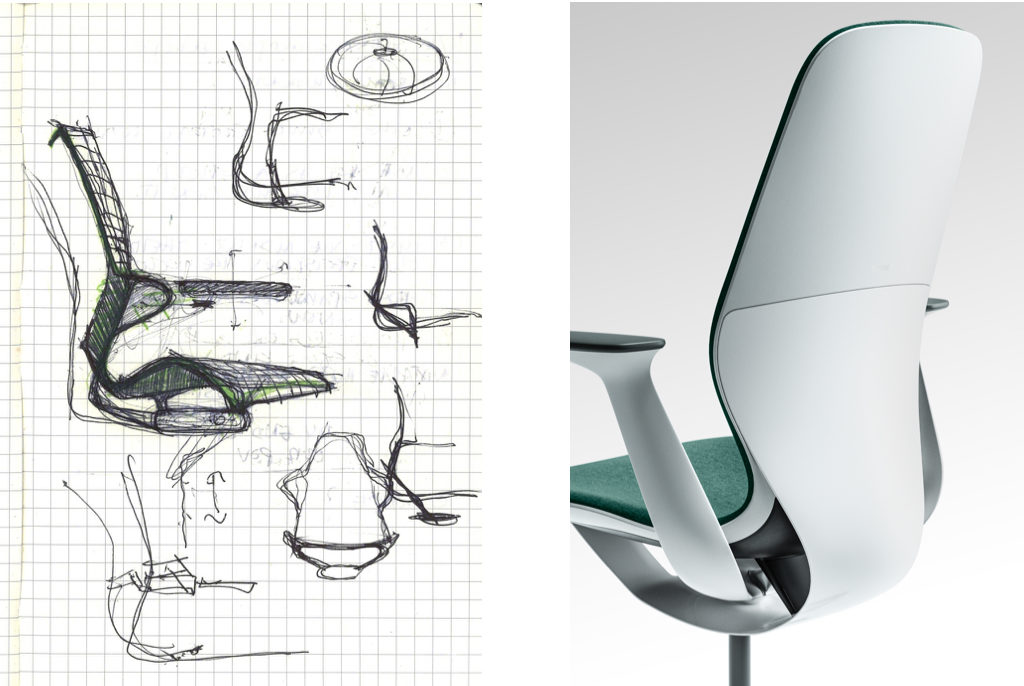Eighteen months ago, designer James Ludwig holed up in a 20×15’ room at Steelcase’s headquarters, in Grand Rapids, Michigan, to zero in on an idea he’d been mulling over for nearly a decade: to create an office chair that operates as seamlessly as an appendage, like an arm or a leg. From behind closed doors and paper bag–covered windows, Ludwig—who joined the office furniture–maker in 1999 and is now its vice president of global design and engineering—and his team attempted to combine simplicity with superior materials and performance in an intuitive, elegant seat. They told no one about the project, which even had a code name: “Q.”
“We wanted to create a chair that knew you without a long introduction,” Ludwig says. The result, unveiled today, is Silq, a game-changing seat poised to dramatically up the experience of working for desk jockeys around the world. Made of a patent-pending high-performance polymer developed by Steelcase, Silq has the stiffness and lightness of carbon fiber but is affordable enough to mass-produce. (For purists, there’s a deluxe carbon-fiber version available, too.) Ludwig says that he’s indebted to the company’s chief engineer, Kurt Heidmann, who had worked previously on nuclear submarines and was instrumental in the material breakthrough. Sit in it, as I did, and you’ll find that it really does connect with your body as a kind of second skin, responding to movements in a natural, almost magical, way. Its upholstery, offered through Steelcase and Designtex, comes in a variety of materials and can be created with a custom or preferred fabric, taking Silq another step closer to its user.
As Steelcase prepares for Silq to hit the market in North America and Asia this spring (and Europe, Africa, and the Middle East in the fall), Ludwig is most looking forward to witnessing his favorite effect of the chair. “We’re really proud of this technical achievement,” he says. “But people smile when they sit in it—that’s the greatest reward of all.”


